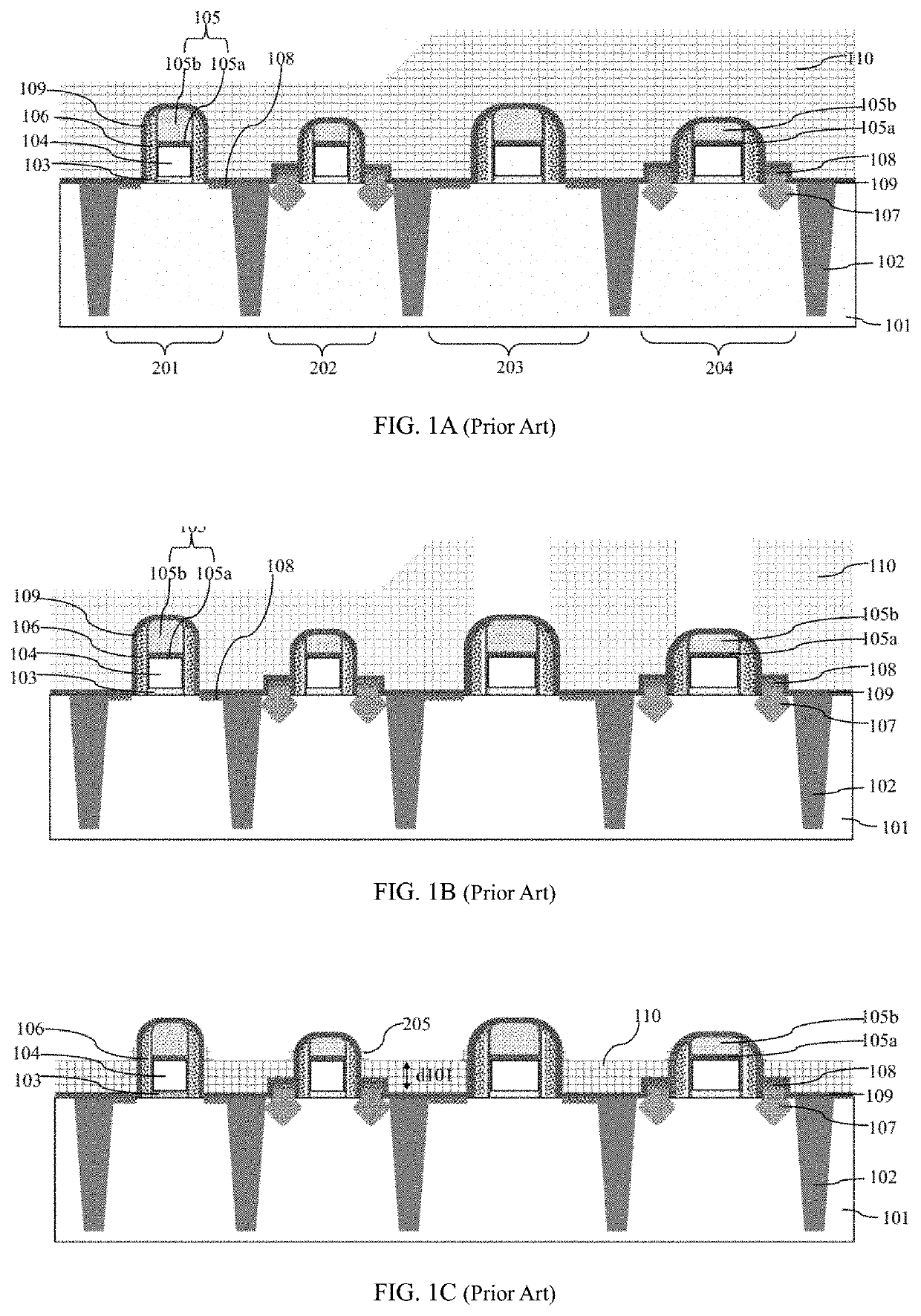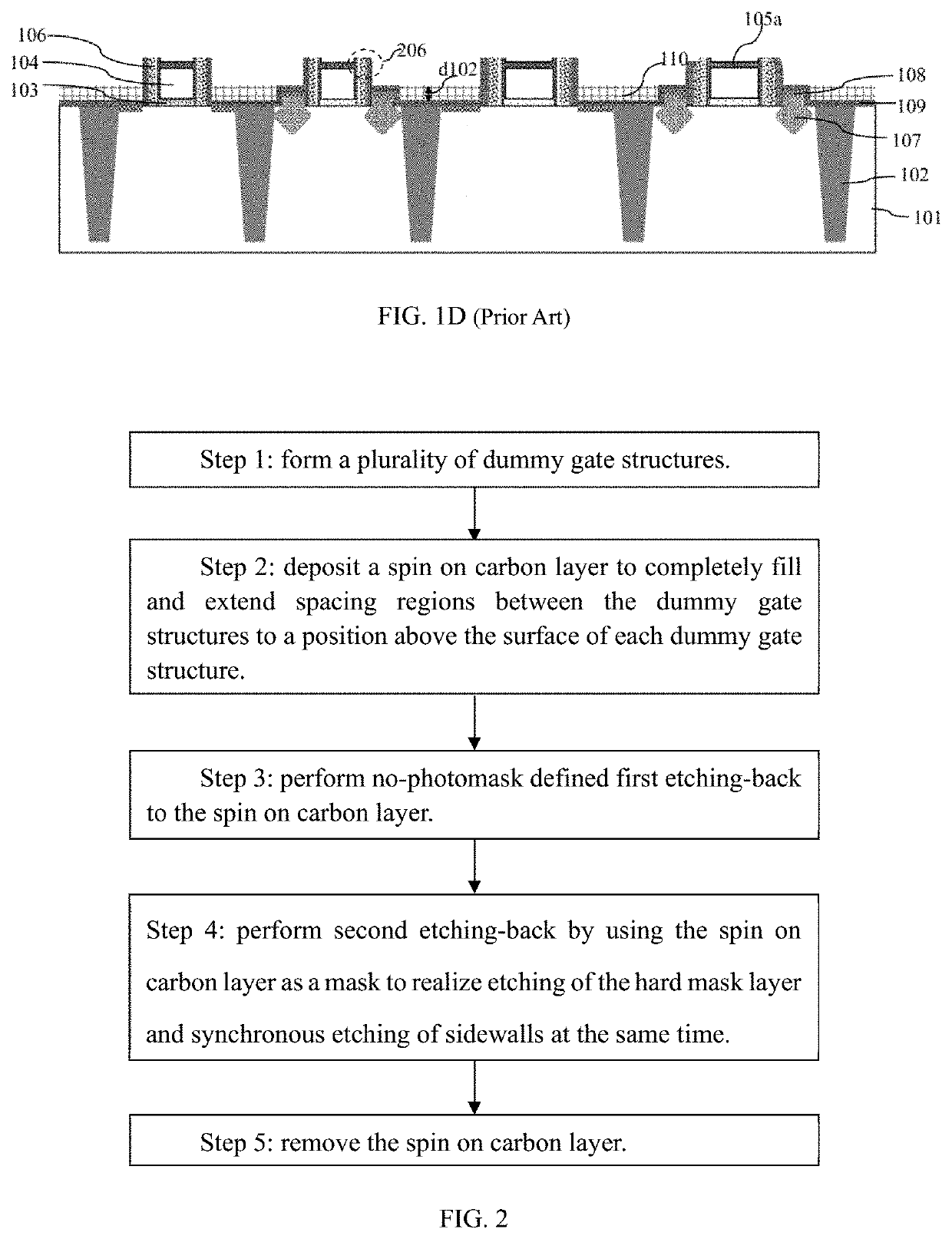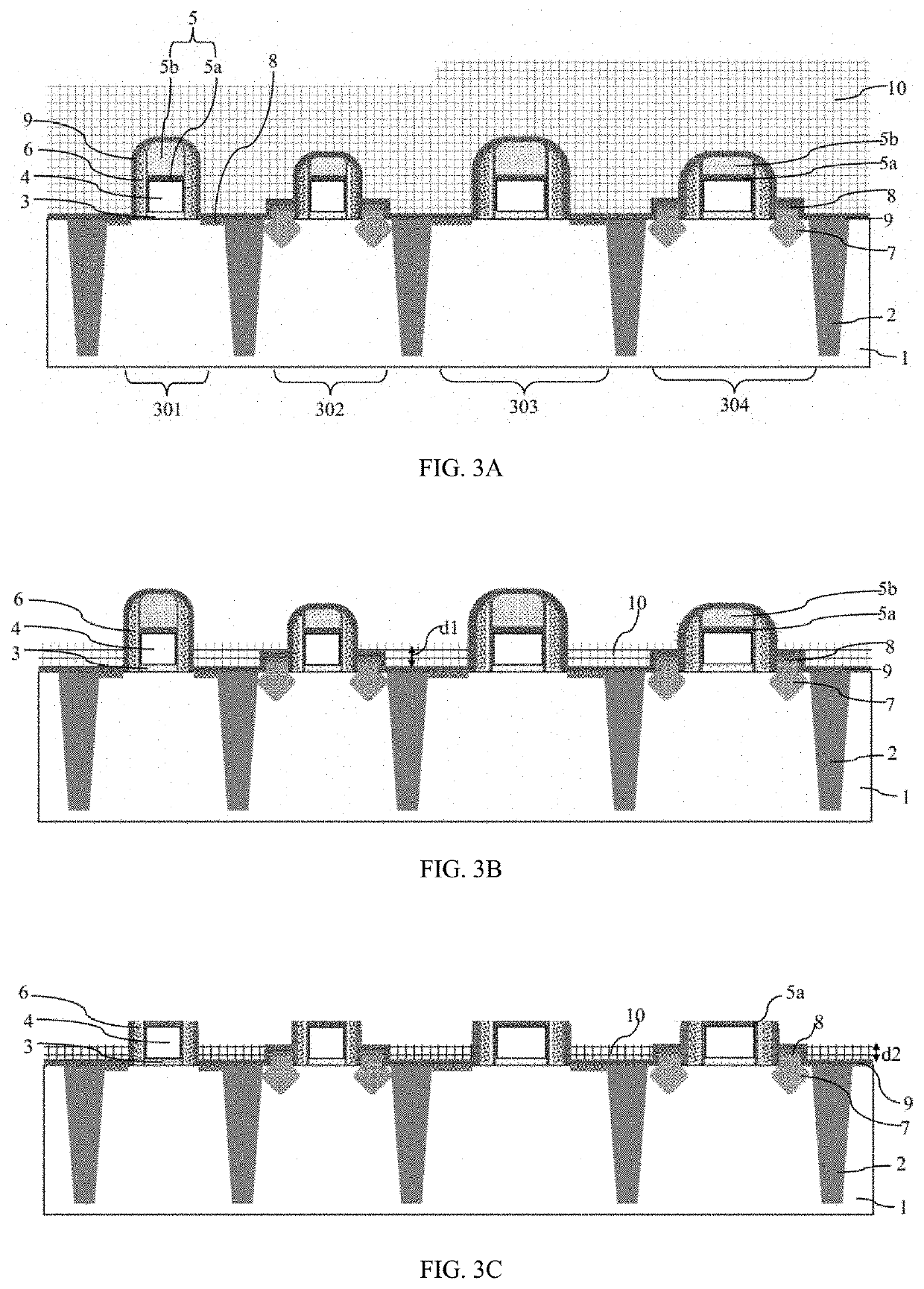Method for etching back hard mask layer on tops of dummy polysilicon gates in gate last process
a technology of dummy polysilicon and gate, which is applied in the direction of semiconductor devices, electrical equipment, transistors, etc., can solve the problems of reducing the thickness of the surface structure of the semiconductor substrate on both sides of the dummy gate structure, severely affecting device performance, and leaving polysilicon residue at the gate, etc., to achieve small process control window, reduce cost and process complexity, and increase thickness
- Summary
- Abstract
- Description
- Claims
- Application Information
AI Technical Summary
Benefits of technology
Problems solved by technology
Method used
Image
Examples
Embodiment Construction
[0085]The following description enables readers to implement and use the present disclosure into specific application scenarios. Various modifications in different applications will be obvious to a person skilled in the art, and the general principles defined herein can be applied to embodiments in a relatively wide range. Therefore, the present disclosure is not limited to the embodiments given herein, but should be granted the broadest scope consistent with the principle and novel feature disclosed herein.
[0086]In the following detailed description, many specific details are set forth to provide a more thorough understanding of the present disclosure. However, it is obvious to a person skilled in the art that the practice of the present disclosure may not necessarily be limited to these specific details. In other words, certain structures and devices are shown in the form of block diagrams rather than in details, to avoid obscuring the present invention.
[0087]Readers should pay at...
PUM
| Property | Measurement | Unit |
|---|---|---|
| density | aaaaa | aaaaa |
| densities | aaaaa | aaaaa |
| time | aaaaa | aaaaa |
Abstract
Description
Claims
Application Information
 Login to View More
Login to View More - R&D
- Intellectual Property
- Life Sciences
- Materials
- Tech Scout
- Unparalleled Data Quality
- Higher Quality Content
- 60% Fewer Hallucinations
Browse by: Latest US Patents, China's latest patents, Technical Efficacy Thesaurus, Application Domain, Technology Topic, Popular Technical Reports.
© 2025 PatSnap. All rights reserved.Legal|Privacy policy|Modern Slavery Act Transparency Statement|Sitemap|About US| Contact US: help@patsnap.com



